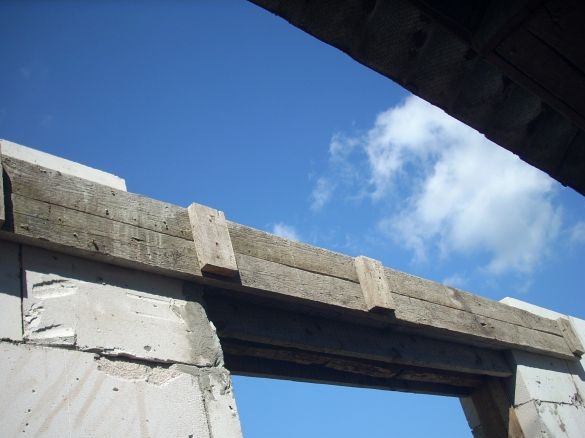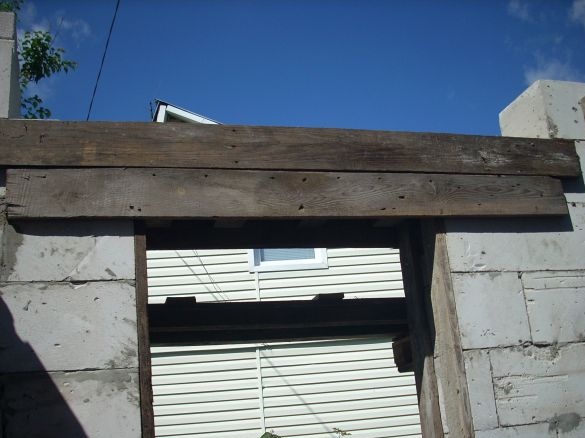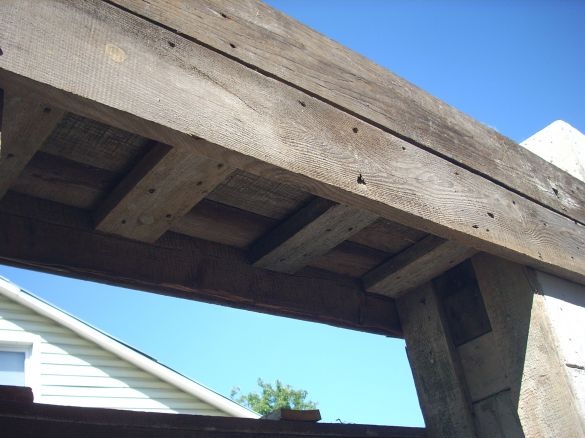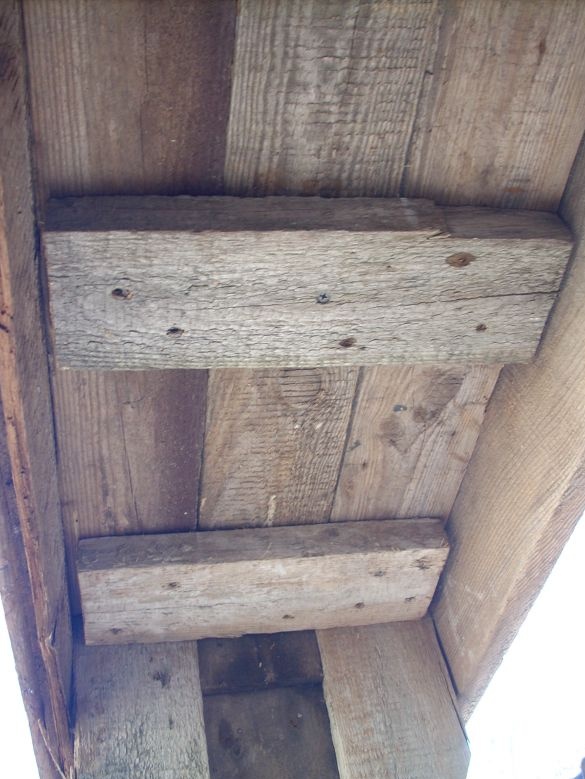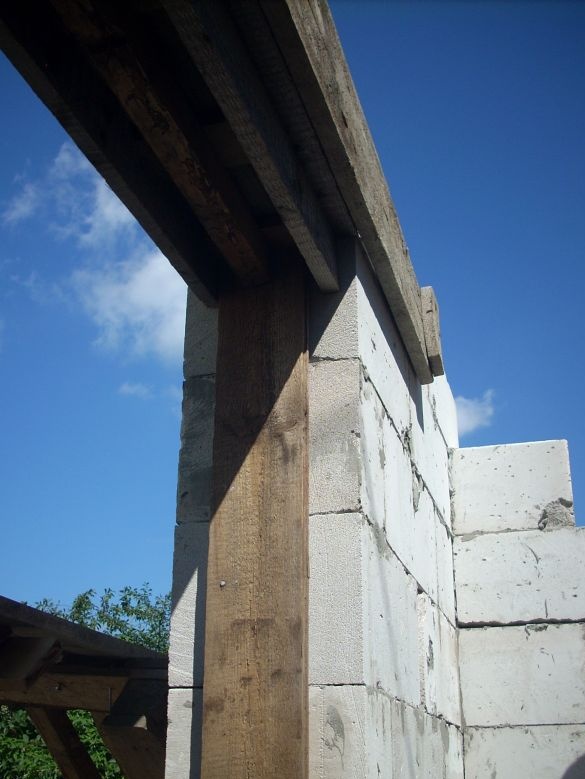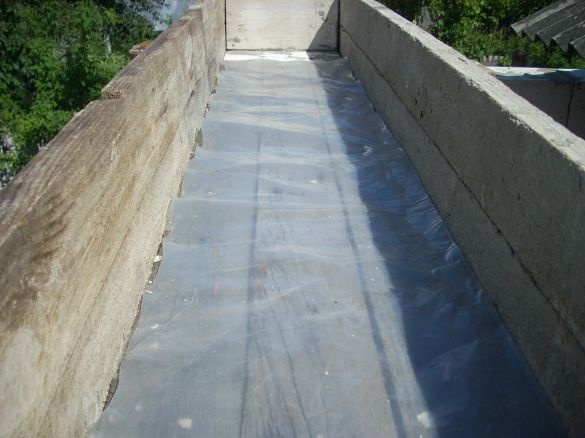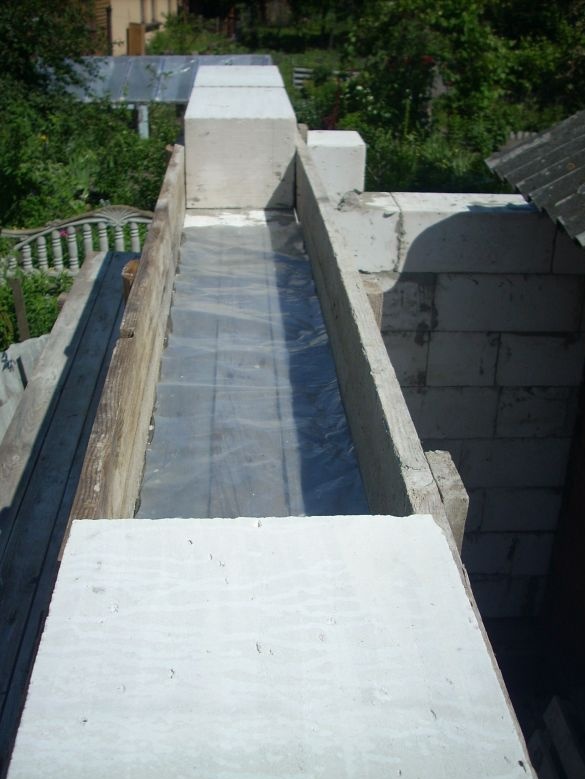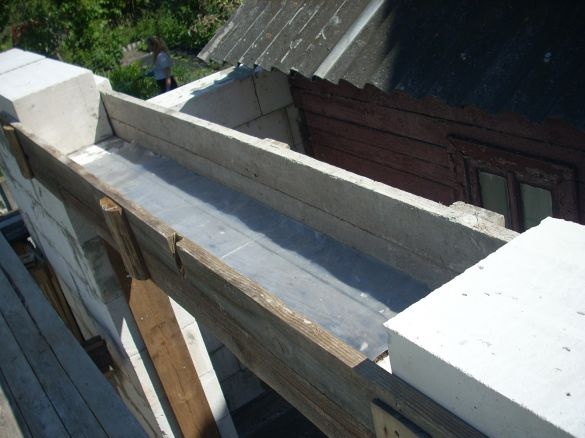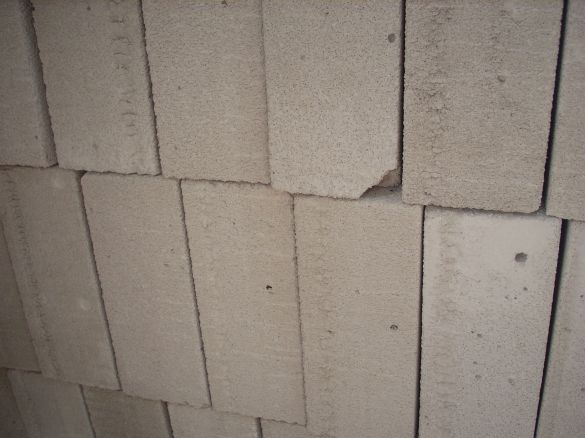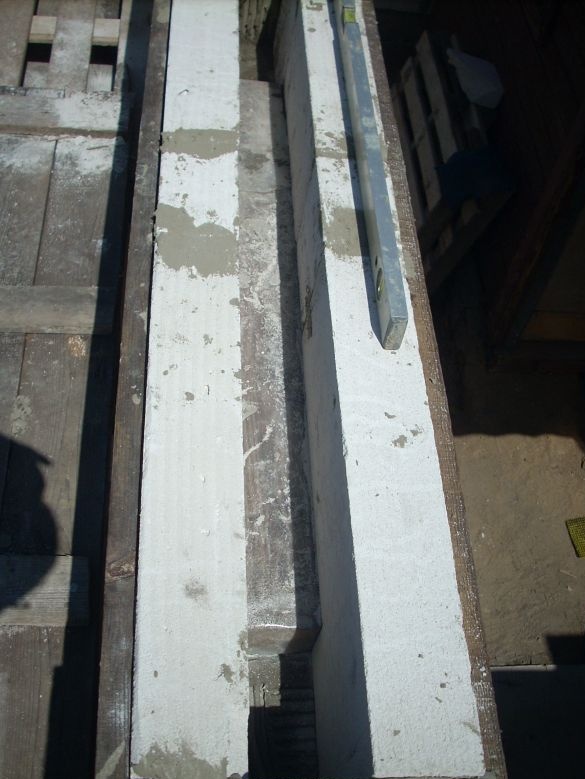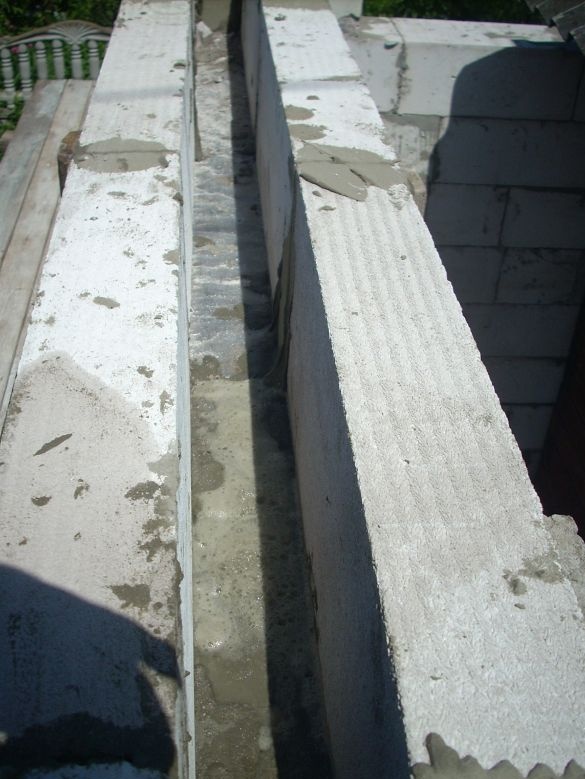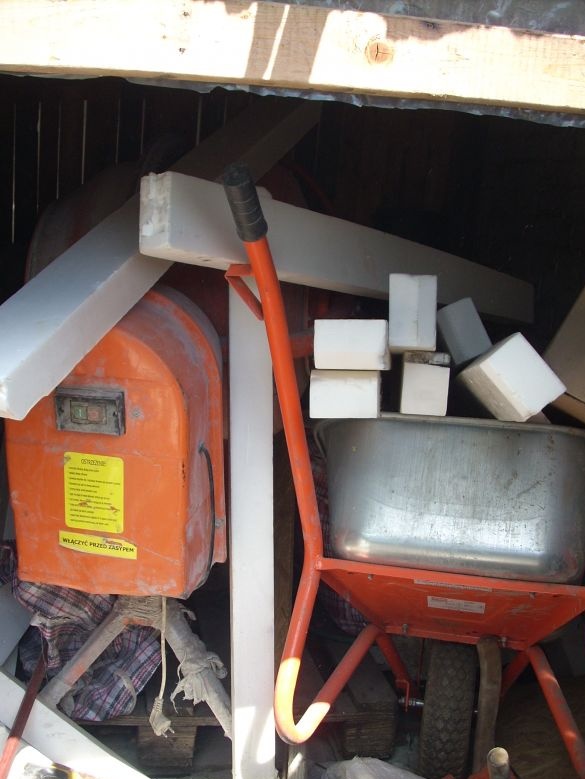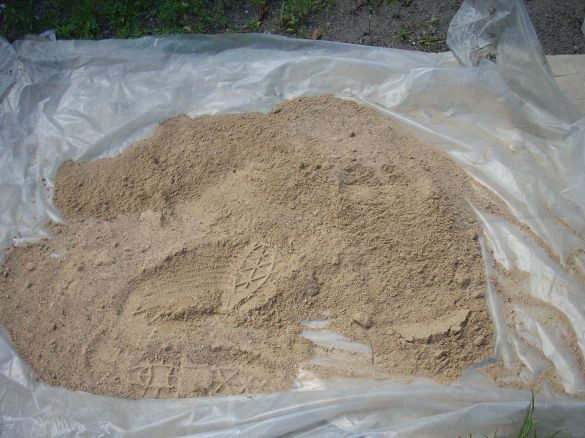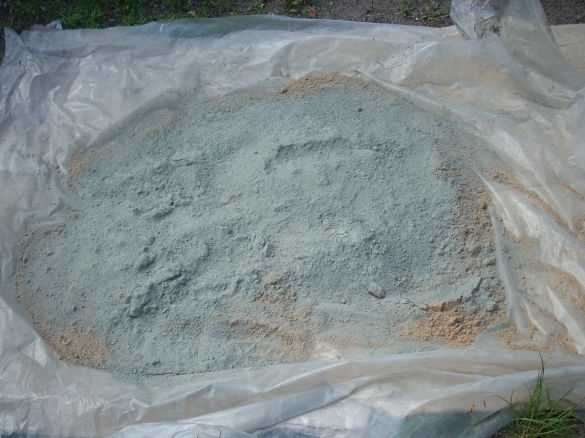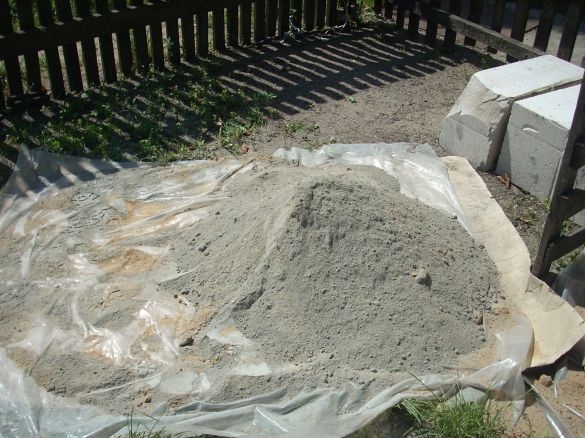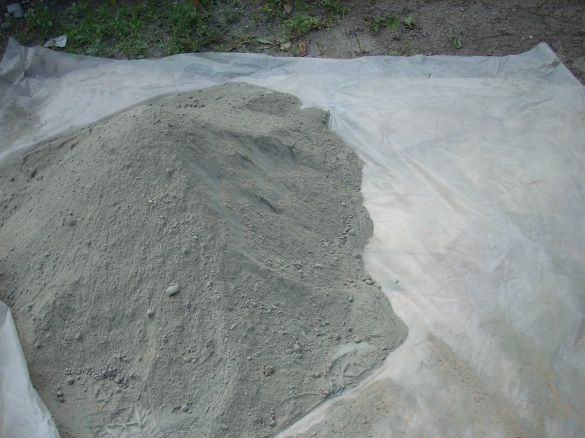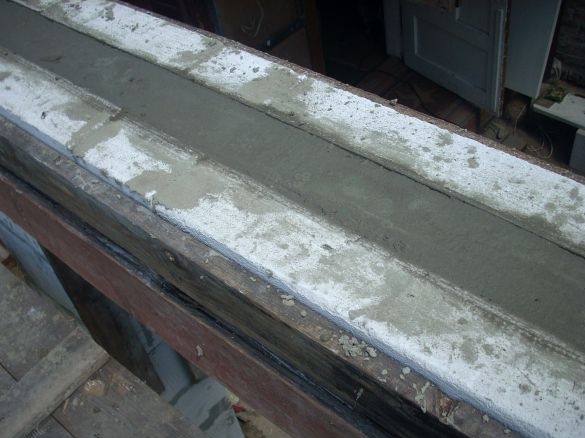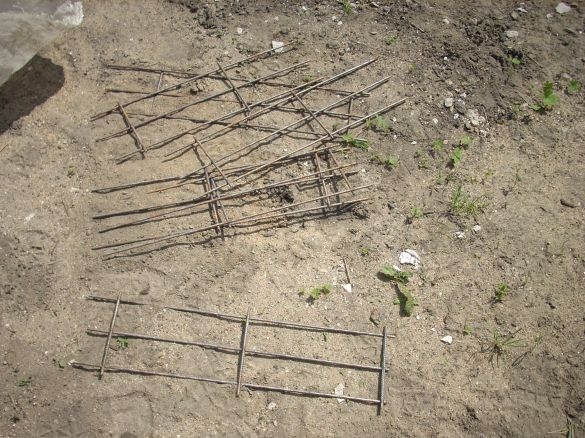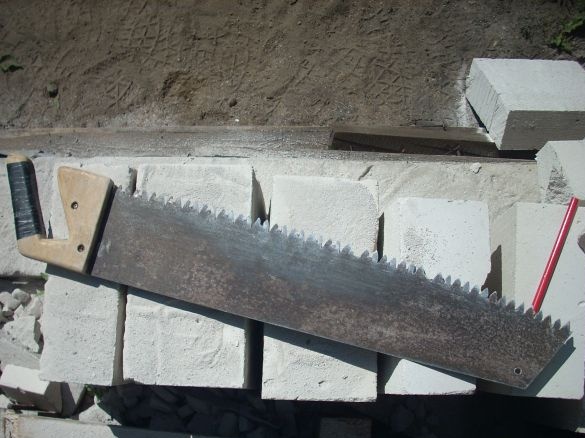There are a lot of technologies for building jumpers. Ready-made reinforced concrete lintels are sold, you can put metal corners, you can build a formwork and pour it yourself from concrete, etc.
But ready-made jumpers are quite expensive, and you need to pay for shipping and unloading - you can’t bring it to a passenger car)))). And then you can’t throw one upstairs ...
Metal corners are also not cheap (because you need quite powerful ones). In addition, I also encountered such a drawback of them - over time, rust passed through the putty and wallpaper .... After all, the putty layer above them is very thin - the plaster hides their thickness, and above them only putty.
I do everything myself, I like to work alone, so I decided to fill in place of concrete.
There are "moments" here: the concrete lintel should not freeze, otherwise the window openings will "cry" in winter. They solve this problem, as a rule, laying outside 5 cm of extruded polystyrene foam. He is also not cheap.
I build from gas silicate blocks. The manufacturer has U-shaped blocks that can be laid out on a support, and then pour concrete into the formed gutter. It seems to be normal, but ... such blocks are completely "not humane" !!! (Exactly four times more expensive than ordinary ones), and again you have to go after them with trailer..
Therefore, I acted easier ....
So we need:
1. Boards for formwork. (Any who are not greedy)
2. Gas silicate blocks.
3. Cement.
4. Sand, or ASG
5. Fittings.
First of all, we construct the formwork: I used boards for it from which I used to make formwork for the foundation ... And before that they served somewhere else.)))) .... I don’t like to buy new ones and throw them away after one use.))).
We fix on each side with two vertical boards. I just nailed them with big nails.
With a window opening a little more complicated. It is much wider, so I strengthened the formwork with three boards placed "on the edge":
As side shields, I also used an old basement formwork. I just fixed them with long screws - they do not hold the nails in the gas-selicat "on separation" at all.
Inside, I laid a plastic film so that the concrete would not stick to the tree:
As I said, I build from gas-silicate blocks. Their sizes are 625 by 300 by 250 mm. That is, my wall thickness is 300 mm. The height of one row is 250 mm. I don’t need a jumper of such enormous size. And if you do it thinner, then you have to fool around with cutting out the "additional" blocks ... Therefore, I acted easier. I had partition blocks of the same manufacturer. They have the same height and length, but the width is only 100 mm.
With these blocks I laid out two rows in each formwork. Where the blocks were completely lying on the tree, glue was applied only to the ends:
So, I got a "fixed formwork" of a porous, non-freezing material. The remaining in the middle of the space, measuring 100 by 250 mm, is more than enough for making a powerful reinforced concrete lintel. (Especially since 250 is the height.)
It remains only to make concrete. I made it from cement M500D20 and sand and gravel. It is possible from sand, but I had ASG.))))). By the way, in the manufacture of sand, the volumetric proportions of cement / sand should be observed 1/3. And when using ASG, the proportion can be increased to 1/5 without loss of concrete grade. (If clay does not come into ASG).
Opening the barn, I sadly realized that getting a concrete mixer is not so easy. Since the fall did not get ...
Therefore, given that I do not need much concrete, I decided to make it in the old-fashioned way - "on a hill."
A thin layer of sand is poured:
Then, observing the proportions, a layer of cement is poured:
Then again sand and again cement. It is better to do this on a steel sheet or concrete site, but I had only the unnecessary old film on hand.
The resulting “sandwich” is thrown with a shovel to the edge of our site, pouring strictly at one point. The bottom line is that this forms a hill and grains of sand, rolling down, completely collapsed in cement. The resulting slide is again thrown to the other edge of the site in the same way.
If the sand is very dry - this is enough. Our entire mixture acquired a uniform color, which means that all the grains of sand fell in cement.
We make a "crater":
Pour water there.
We smoke for 15-20 minutes. During this time, water saturates our mixture. Add water and gently pour in the dry residue.
Everything - concrete is ready. Throw it inside our fixed formwork.
Yes, I completely forgot. The jumper must be reinforced. I was left over from the last construction site with the remains of the masonry net:
Since now the blocks are put on glue, they are not needed. Therefore, I connected them together and placed them as jumpers in the jumpers.
If your reinforcement is small and not enough for several layers, then do not forget that concrete works very well in compression and very poorly in tension. Therefore, it is necessary to position the reinforcement belt as low as possible. From above, he will not give anything at all.
That's all! The jumpers are ready ... Maybe someone will come in handy ...
By the way, if I didn’t have partition blocks, I would just saw a big one. It will turn out cheaper - partition walls are more expensive than usual, if you count in cubic meters. This is very easy to do, for example, using my homemade saw:


